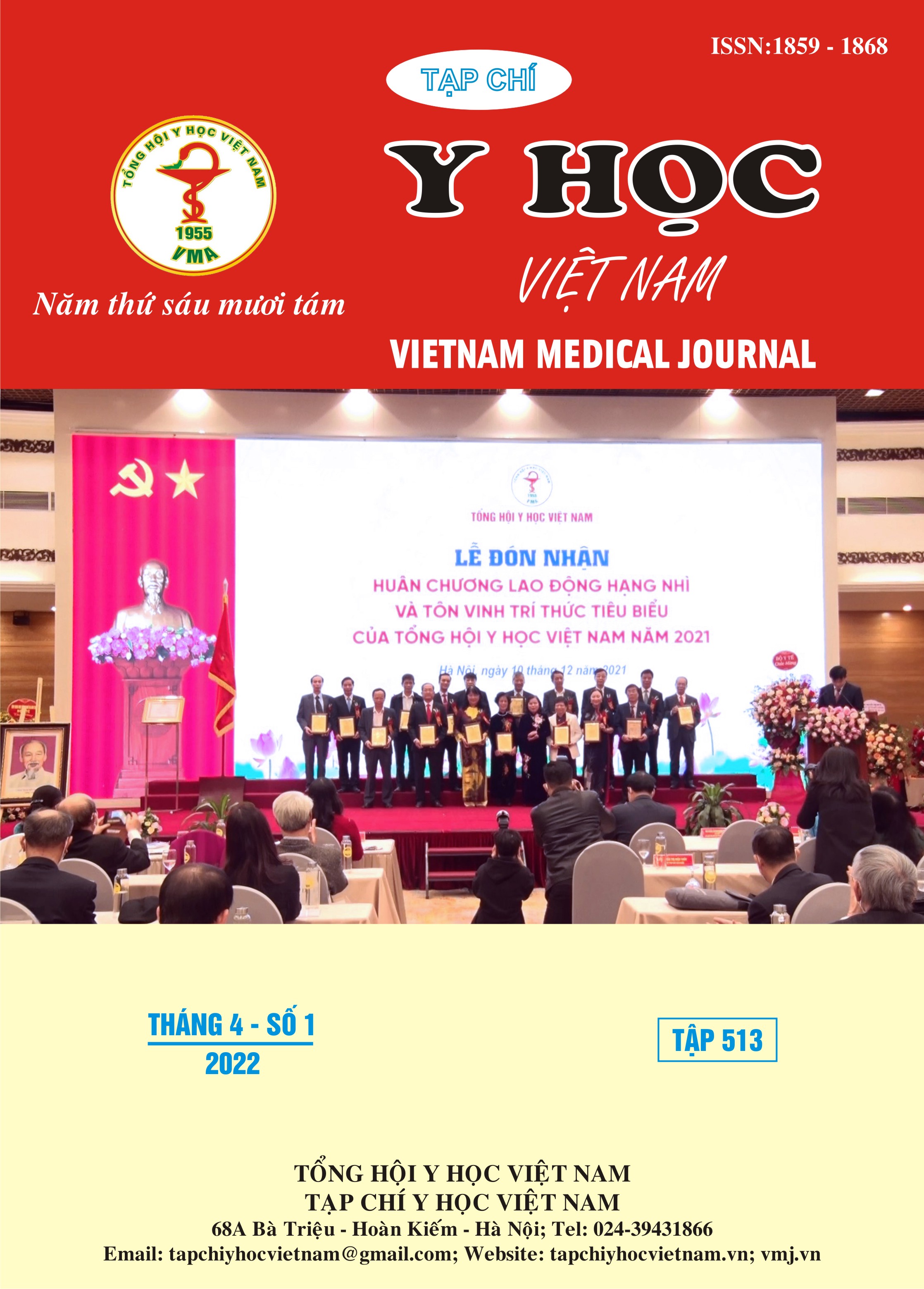RESEARCH ON ANAPATHOLOGICAL CLASSIFICATION AND SOME IMMUNOHISTOCHEMICAL MARKERS OF THE DIFFUSE GLIOMAS OF THE BRAIN BASED ON THE WORLD HEALTH ORGANIZATION (WHO) IN 2007
Main Article Content
Abstract
Objection: Determine the rate of the anapathological types of the diffuse cerebral gliomas based on the WHO in 2007, and analyze the correlation of immunohistochemical markers with the anapathological types and grades. Research material: Specimens, slides, and paraffin blocks from patient cases, which have been surgically removed from brain tumors, at the Viet Duc Hospital, from 1/2015 to 1/2020. Study method: Description of the cross-section. Analysis of disease distribution characteristics of research variables such as gender, age. Diagnosed, classified, and evaluated the malignancy of diffuse gliomas based on the classification system of the World Health Organization in 2007. Analysis of distribution characteristics of diseases of gender, age. Histopathological feature, the grading of brain tumors assessed on the scale of malignancy. Investigation of some immunohistochemical markers in brain tumors and their relationship to histopathological grade such as: IDH1, Ki67 and P53. Results: There are 216 patients, aged from 20 to 79, the age group 30-40 years, accounting for 25.5% male/female=1.16. These diffuse gliomas were mainly composed of the following three major groups: Glioblastoms was 38%, AnaplasticAstrocytoma was 14.3 %, and Anaplastic Oligodendrocytoma was 13.4 %. The most common histopathological grade was grade 4 with 38%, following this was grade 3 with 35.6%, and the least common was grade 2 with 26.4%. The positive rate for IDH1 marker of grade 2 glioma was the highest, accounting for 89.5%. The positive rate for IDH1 marker of grade 4 glioma was the lowest, accounting for 31.7%. The positive rate for the P53 marker of glioblastoma was the highest at 81.7%. The positive rate for P53 marker of grade 2 glioma was the lowest, accounting for 54.4%. Conclusion: Diffuse gliomas occur in both sexes, male/female=1.16/1, the most duration of the age was 30-40. The three most common histopathological types of diffuse gliomas were: Glioblastoma, Anaplastic Astrocytoma, and Anaplastic Oligodendrocytoma. The most common histopathological grade was grade 4. The highest positive rate for IDH1 markerwas grade 2. The highest positive rate for P53 was grade 4 with 81.7%. The positive rate of Ki67 with grade 2 was 3.8±1.57, grade 3 was 14.6±6.01 and grade 4 was 32.4±12.90.
Article Details
Keywords
Diffuse gliomas, Glioblastomas, Astrcytomas, Oligodendrogliomas and immunohistochemical stain
References
2. Trần Minh Thông (2007). Đặc điểm giải phẫu bệnh của 1187 ca u sao bào. Tạp chí Y Học Thành Phố Hồ Chí Minh;11(3):41-46.
3. Nguyễn Phúc Cương, Nguyễn Sỹ Lánh (2001) Nghiên cứu áp dụng phân loại mới các u thần kinh đệm vào chẩn đoán mô bệnh học. Kỷ yếu công trình nghiên cứu khoa học tập II, 2001, 241-245.
4. Hoàng Anh Vũ, Đỗ Phú Quang, Trần Minh Thông. Phát hiện đột biến p.R132H của gen IDH1 trong u thần kinh đệm bằng kỹ thuật ASO-PCR. Y học TP Hồ Chí Minh. 2015;19(5):281-285.
5. Phạm Tuấn Dũng (2017). Nghiên cứu giá trị của cộng hưởng từ tưới máu và cộng hưởng từ phổ trong chẩn đoán một số u thần kinh đệm trên lều ở người lớn. Luận án thạc sỹ y học, Trường Đại học Y Hà Nội.
6. Khalid H, Shibata S, Kishikawa M, Yasunaga A, Iseki M, Hiura T. Immunohistochemical analysis of progesterone receptor and Ki-67 labeling index in astrocytic tumors. Cancer. 1997;80(11):2133-2140.
7. Wakimoto H, Aoyagi M, Nakayama T, et al. Prognostic significance of Ki-67 labeling indices obtained using MIB-1 monoclonal antibody in patients with supratentorial astrocytomas. Cancer. 1996;77(2):373-380.
8. Byreddy VR, Sreelakshmi I, N EA. Role of Ki 67 immunostaining as an adjunct to differentiate low grade and high-grade Gliomas. IOSR Dent Med Sci (IOSR-JDMS) 2018;17: 11–7.
9. Leeper HE, Caron AA, Decker PA, Jenkins RB, Lachance DH, Giannini C. IDH mutation, 1p19q codeletion and ATRX loss in WHO grade II gliomas. Oncotarget. 2015;6(30):30295-30305.
10. Sipayya V, Sharma I, Sharma KC, Singh A. Immunohistochemical expression of IDH1 in gliomas: a tissue microarray-based approach. J Cancer Res Ther. 2012;8(4):598-601.


